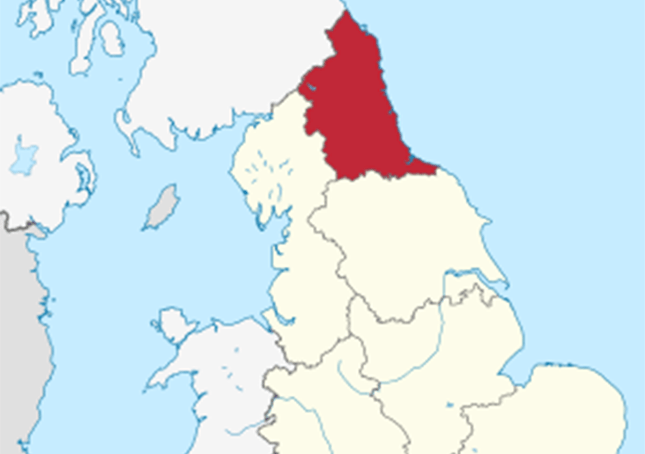North East England

North East England is one of nine official regions of England at the first level of NUTS for statistical purposes. The region includes the counties of Tyne and Wear, County Durham, Northumberland and a small part of North Yorkshire. Large settlements include the cities of Newcastle upon Tyne, Sunderland and the City of Durham and towns of Gateshead, Darlington, Middlesbrough, Stockton-on-Tees and Hartlepool.
The region’s historic importance is displayed by Northumberland’s ancient castles, the two World Heritage Sites of Durham Cathedral and Durham Castle,[2] and Hadrian’s Wall,[3] one of the frontiers of the Roman Empire. In fact, Roman archaeology can be found widely across the region and a special exhibition based around the Roman Fort of Segedunum at Wallsend[4] and the other forts along Hadrian’s Wall are complemented by the numerous artifacts that are displayed in the Great North Museum Hancock[5] in Newcastle. St. Peter’s Church in Monkwearmouth, Sunderland and St. Pauls in Jarrow also hold significant historical value and have a joint bid to become a World Heritage Site.
The area has a strong religious past, as can be seen in works such as the Lindisfarne Gospels and the Anglo-Saxon Chronicle.[6] The works of Cuthbert (634–687 AD), Bede (673–735 AD) and Hilda of Whitby (614–680 AD) were hugely influential in the early church, and are still venerated by some today.[7][8] These saints are usually associated with the monasteries on the island of Lindisfarne, Wearmouth-Jarrow, and the Abbey at Whitby, though they are also associated with many other religious sites in the region.
Bede is regarded as the greatest Anglo-Saxon scholar. He worked at the monasteries of Wearmouth and Jarrow, translating some forty books on all areas of knowledge, including nature, history, astronomy, poetry and theological matters such as the lives of the saints. His best known work is “The Ecclesiastical History of the English People”.[9] One of the most famous pieces of art and literature created in the region is the Lindisfarne Gospels, thought to be the work of a monk named Eadfrith, who became Bishop of Lindisfarne in 698. This body of work is thought to have been created in honour of Cuthbert, around 710–720.[10]
On 6 June 793 the Vikings arrived on the shores of north-east England with a raiding party from Norway who attacked the monastic settlement on Lindisfarne.[11] The monks fled or were slaughtered, and Bishop Higbald sought refuge on the mainland. A chronicler recorded: “On the 8th June, the harrying of the heathen miserably destroyed God’s church by rapine and slaughter.” There were three hundred years of Viking raids, battles and settlement until William the Conqueror defeated King Harold at Hastings in 1066.
The Anglo-Saxon Chronicle notes the change from raiding to settlement when it records that in 876 the Vikings “Shared out the land of the Northumbrians and they proceeded to plough and support themselves”[13] The Anglo-Saxon Kingdom of Northumbria extended from the Scottish borders (then Pictish borders) at the Firth of Forth to the north, and to the south of York, its capital, down to the Humber. The last independent Northumbrian king from 947–8 was Eric Bloodaxe, who died at the Battle of Stainmore, Westmorland, in 954. After Eric Bloodaxe’s death, all England was ruled by Eadred, the grandson of Alfred the Great; and so began the machinery of national government.[14] Today the Viking legacy can still be found in the language and place names of north-east England and in the DNA of its people.
The name Newcastle comes from the castle built shortly after the conquest in 1080 by Robert Curthose, William the Conqueror’s eldest son.
